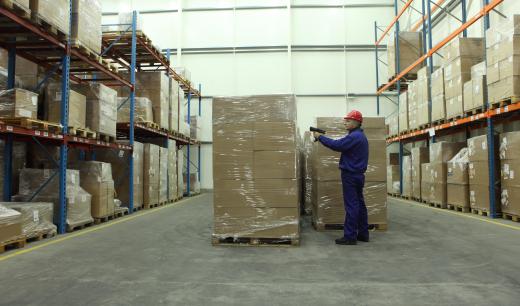Kanban cards are an essential part of any kanban system. The cards are used in production facilities to signal that a part or material is running low and needs to be replaced. Each kanban card gives specific information as to what is needed and exactly how much of it is needed.
These cards were originally developed by Taiichi Ohno in the late 1940s for use in Toyota® factories. Ohno borrowed the word kanban from Japanese, which originally referred to elaborate wooden or metal signs that were used as trademarks in 17th century Japan. Since the middle of the 20th century, less elaborate kanban cards have been used in factories worldwide to cut down on costs.

The purpose of a kanban system is to cut costs by controlling inventory. Overstock wastes space, and employees waste time placing extra materials in storage and moving it out later. No business, however, wants to run out of an item and make customers wait. Proper use of kanban cards ensures that there is enough inventory on hand for normal operation with very little overstock.

Move cards, which are also known as conveyance cards, and production cards are the two main types of kanban cards. A move card is used to request the movement of materials from one work station or storage place to another within a production facility. This is most often used for common parts, such as screws and bolts, that may be kept primarily in one place, so that they don’t take up much space at a specific work station.
Production cards signal that more of a part must be produced, either by manufacturing within the facility or by ordering from a supplier. A signal or material card is a type of production card which tells managers to order a specific material. Supplier cards can be sent directly to a supplier to order more stock.
A kanban post is the central location for all kanban cards. When something is needed, an employee will put the proper card into the part of the kanban post for new orders. When a manager places an order, he or she will place the corresponding kanban card in the section for items that have been ordered but have not been received.
In most systems, when the item has been received the kanban card is placed with it. As the stock is depleted, the kanban card will become visible and an employee will place the card in the kanban post to place the order. In other systems, all cards stay at the post. If an item is not being ordered or awaiting shipment, it will simply be filed with the other kanban cards until it is needed.
